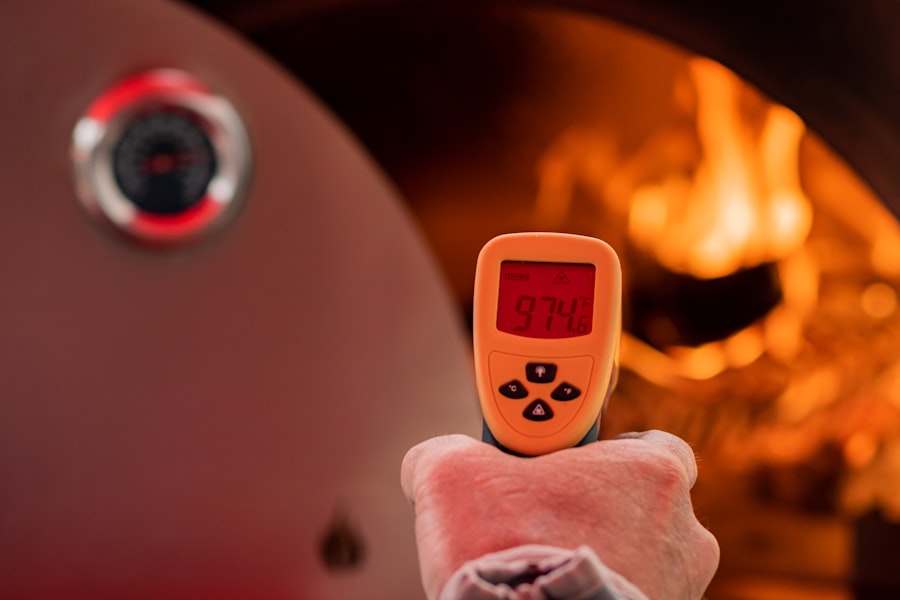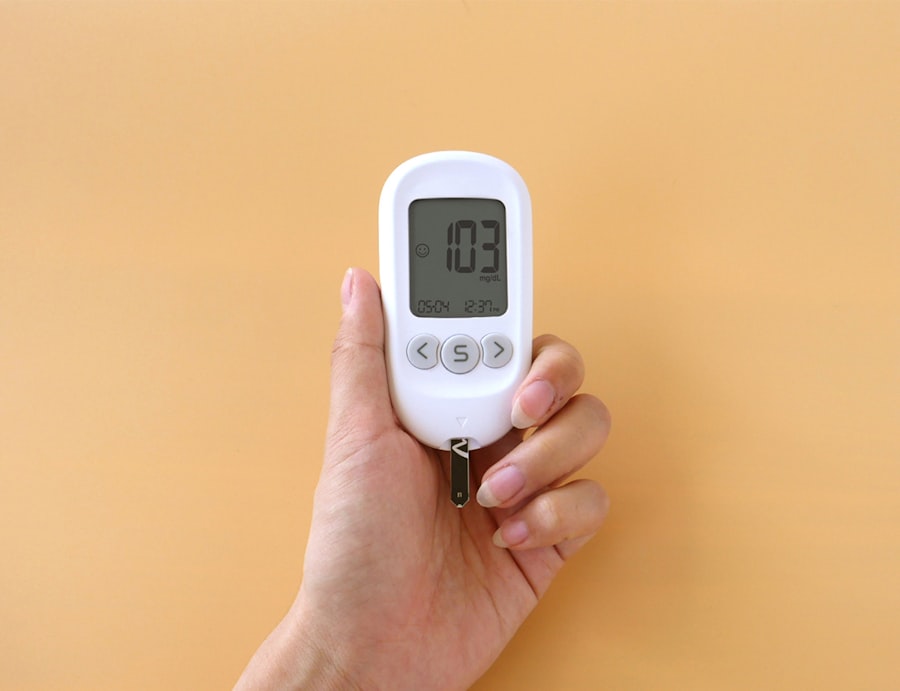Temperature manipulation is a fundamental concept that plays a crucial role in various fields, from cooking to scientific research. At its core, temperature manipulation involves the ability to control and adjust the thermal energy of a substance or environment. This control can significantly impact the properties and behaviors of materials, whether you are preparing a meal, conducting an experiment, or preserving food.
Understanding the basics of temperature manipulation allows you to harness its power effectively, leading to better outcomes in your endeavors. As you delve into the world of temperature manipulation, it’s essential to recognize that temperature is not just a number on a thermometer; it represents the kinetic energy of particles within a substance. When you heat something, you increase the energy of its molecules, causing them to move more rapidly.
This fundamental principle underlies many processes you encounter daily, from cooking your favorite dish to understanding how materials behave under different thermal conditions.
Key Takeaways
- Understanding the basics of temperature manipulation is crucial for successful cooking and baking.
- The science behind temperature control involves understanding how heat is transferred and how different ingredients react to temperature changes.
- Tools and equipment for temperature manipulation include thermometers, ovens, stovetops, and refrigeration units.
- Techniques for adjusting temperature include searing, simmering, boiling, and chilling.
- Mastering heat transfer is essential for achieving the desired texture and flavor in dishes.
The Science Behind Temperature Control
The science of temperature control is rooted in thermodynamics, the study of heat and energy transfer. You may find it fascinating that there are three primary laws of thermodynamics that govern how energy moves and changes form. The first law states that energy cannot be created or destroyed; it can only change from one form to another.
This principle is vital when considering how heat is transferred in various systems, whether in a kitchen or a laboratory. The second law introduces the concept of entropy, which describes how energy tends to disperse and spread out over time. In practical terms, this means that heat will naturally flow from hotter objects to cooler ones until thermal equilibrium is reached.
Understanding these laws helps you appreciate the importance of maintaining specific temperatures in your work, as even slight deviations can lead to significant changes in outcomes. Whether you are cooking, brewing, or conducting experiments, grasping these scientific principles will enhance your ability to manipulate temperature effectively.
Tools and Equipment for Temperature Manipulation

To manipulate temperature successfully, you need the right tools and equipment at your disposal. In the kitchen, for instance, thermometers are indispensable for monitoring the internal temperatures of meats, candies, and baked goods. Digital instant-read thermometers provide quick and accurate readings, allowing you to ensure that your dishes are cooked to perfection.
Additionally, sous-vide machines have gained popularity for their ability to maintain precise temperatures over extended periods, resulting in tender and flavorful meals. In scientific settings, temperature control equipment can range from simple water baths to sophisticated climate-controlled chambers. These devices allow researchers to create specific thermal environments for experiments, ensuring consistent results.
Understanding the capabilities and limitations of each tool is essential for effective temperature manipulation. By familiarizing yourself with various instruments, you can choose the right one for your specific needs and achieve optimal results in your culinary or scientific pursuits.
Techniques for Adjusting Temperature
| Technique | Effectiveness | Cost | Complexity |
|---|---|---|---|
| Insulation | High | Low | Low |
| Thermostat adjustment | High | Low | Low |
| Window treatments | Medium | Medium | Low |
| Ceiling fans | Low | Low | Low |
Adjusting temperature requires a combination of techniques that vary depending on the context in which you are working. In cooking, for example, you might use methods such as searing, simmering, or baking to achieve desired results. Each technique involves manipulating heat in different ways—searing creates a crust through high heat while simmering gently cooks food at lower temperatures.
Mastering these techniques allows you to control not only the temperature but also the texture and flavor of your dishes. In scientific applications, temperature adjustment often involves more precise methods such as using heating mantles or cooling jackets. These tools enable you to raise or lower temperatures gradually and uniformly, which is crucial for experiments that require specific thermal conditions.
Additionally, understanding how to insulate or conduct heat effectively can enhance your ability to manipulate temperatures in various settings. By experimenting with different techniques and tools, you can develop a deeper understanding of how temperature affects your work and learn to adjust it with confidence.
Mastering Heat Transfer
Heat transfer is a critical aspect of temperature manipulation that involves the movement of thermal energy from one object or substance to another. There are three primary modes of heat transfer: conduction, convection, and radiation. As you explore these concepts, you’ll discover how they apply to both cooking and scientific processes.
Conduction occurs when heat is transferred through direct contact between materials. For instance, when you place a metal pan on a hot stove, heat moves from the burner into the pan through conduction. In contrast, convection involves the movement of heat through fluids (liquids or gases) as they circulate.
This principle is evident when boiling water; as the water heats up at the bottom of the pot, it rises while cooler water descends, creating a continuous flow that distributes heat evenly. Radiation is another fascinating mode of heat transfer that occurs through electromagnetic waves. This is how heat from the sun reaches Earth or how an oven broiler cooks food from above.
Understanding these modes of heat transfer allows you to manipulate temperatures more effectively in both cooking and scientific applications. By mastering these principles, you can optimize your methods for achieving desired results.
Controlling Temperature in Cooking

In cooking, controlling temperature is paramount for achieving consistent and delicious results. Different cooking methods require varying temperatures; for example, frying typically requires high heat while braising involves low and slow cooking. Knowing how to adjust temperatures based on the technique you’re using can make all the difference in flavor and texture.
One effective way to control temperature in cooking is by using an oven thermometer to ensure your oven is calibrated correctly. Many home ovens can be off by several degrees, which can lead to undercooked or overcooked dishes. By regularly checking your oven’s accuracy and adjusting accordingly, you can maintain better control over your cooking process.
Another important aspect of temperature control in cooking is understanding carryover cooking—the phenomenon where food continues to cook even after being removed from heat due to residual heat within the food itself. This knowledge allows you to take meats off the grill or out of the oven just before they reach your desired doneness, ensuring they remain juicy and tender.
Temperature Manipulation in Baking and Pastry
Baking is an art form that relies heavily on precise temperature manipulation. Unlike cooking methods that allow for some flexibility, baking requires accuracy for chemical reactions to occur correctly. For instance, yeast needs specific temperatures to activate properly; too hot can kill it while too cold can slow its growth significantly.
When working with pastries, understanding how temperature affects dough is crucial. Cold butter creates flaky layers in pastries like croissants while warm dough can lead to spreading in cookies. By mastering the art of temperature manipulation in baking, you can achieve perfect textures and flavors that elevate your baked goods.
Additionally, using techniques such as chilling dough before rolling it out or preheating baking sheets can significantly impact your results. These small adjustments can make a big difference in how your pastries rise and bake evenly. By paying attention to temperature throughout the baking process, you can create stunning desserts that impress both visually and taste-wise.
Temperature Control in Beverage Making
Temperature control is equally important in beverage making as it influences flavor extraction and overall quality. Whether you’re brewing coffee or crafting cocktails, understanding how temperature affects these processes can enhance your results significantly.
Generally, water between 195°F and 205°F yields optimal extraction without scalding the coffee. If you’re brewing tea, different types require varying temperatures; green tea benefits from cooler water while black tea thrives at higher temperatures. By mastering these nuances in beverage making, you can create drinks that highlight their unique flavors.
In cocktail preparation, temperature control also matters when shaking or stirring drinks. Shaking cocktails with ice chills them quickly while diluting them slightly; stirring provides a smoother texture without excessive dilution. Understanding these techniques allows you to craft cocktails that are not only visually appealing but also perfectly balanced in flavor and temperature.
Temperature Manipulation in Fermentation and Culturing
Fermentation is a fascinating process that relies heavily on temperature manipulation for success. Whether you’re making yogurt, sauerkraut, or beer, maintaining specific temperatures is crucial for encouraging beneficial microbial activity while inhibiting harmful bacteria. For instance, yogurt fermentation typically occurs at around 110°F for several hours; this warmth encourages the growth of beneficial bacteria while preventing spoilage organisms from taking hold.
Similarly, when brewing beer, different yeast strains thrive at specific temperatures—too high can lead to off-flavors while too low may result in sluggish fermentation. By understanding how temperature affects fermentation processes, you can experiment with different conditions to achieve desired flavors and textures in your products. Monitoring temperatures closely during fermentation allows you to fine-tune your recipes and create unique variations that reflect your personal taste preferences.
Managing Temperature in Storage and Preservation
Temperature management is essential for food storage and preservation as it directly impacts shelf life and safety. Proper refrigeration slows down bacterial growth while freezing halts it altogether; understanding these principles helps you make informed decisions about how best to store perishable items. When storing fruits and vegetables, it’s important to know which items require refrigeration versus those that do better at room temperature.
For example, tomatoes lose flavor when refrigerated while apples benefit from cooler storage conditions. By managing temperatures effectively during storage, you can extend the freshness of your produce and reduce waste. In addition to fruits and vegetables, understanding proper storage temperatures for meats and dairy products is crucial for food safety.
Keeping these items at appropriate temperatures prevents spoilage and reduces the risk of foodborne illnesses—knowledge that every home cook should prioritize.
Troubleshooting Temperature Issues
Despite your best efforts at temperature manipulation, issues may arise that require troubleshooting skills. Common problems include uneven cooking or baking results due to fluctuating oven temperatures or incorrect heat distribution during cooking processes. If you notice uneven browning on baked goods or meats not cooking through properly, consider checking your oven’s calibration or investing in an oven thermometer for accurate readings.
Additionally, rotating trays halfway through baking can help ensure even heat distribution. In beverage making or fermentation processes where temperatures are critical for success, monitor conditions closely throughout each step—if something seems off (like slow fermentation), reassess environmental factors such as ambient room temperature or equipment settings. By developing troubleshooting skills related to temperature issues across various contexts—cooking techniques or scientific experiments—you’ll become more adept at achieving consistent results regardless of challenges encountered along the way.
In conclusion, mastering temperature manipulation opens up a world of possibilities across various fields—from culinary arts to scientific research. By understanding the basics of temperature control and employing effective techniques tailored to each context—whether adjusting heat levels during cooking or managing fermentation processes—you’ll enhance both your skills and outcomes significantly!
In the realm of psychological studies, temperature manipulation has emerged as a fascinating area of research, exploring how changes in temperature can influence human behavior and cognition. A related article that delves into this intriguing subject can be found on Unplugged Psych’s website. This article provides insights into the psychological effects of temperature changes and how they can be utilized in various therapeutic settings. For more detailed information, you can read the full article by visiting




